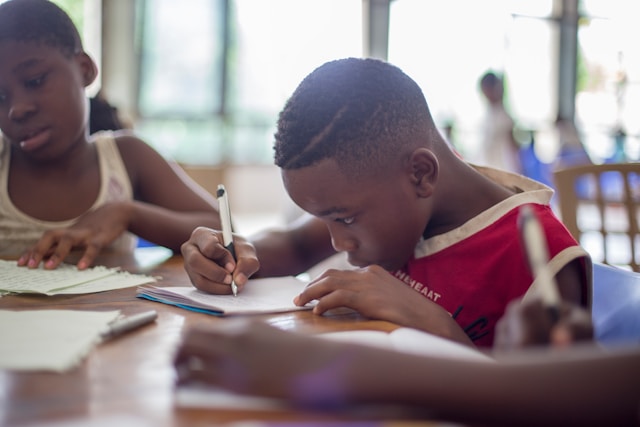
Understanding learning differences can be a daunting task for parents and caregivers, yet it offers a crucial path to better support for children, particularly those managing ADHD and other learning disabilities. At the heart lies the realization that every child learns uniquely, and what works for one may not suit another. Parents and caregivers play an essential role in navigating these options, ensuring their children have the best chance to succeed.
They must become familiar with different learning styles, ranging from visual to kinesthetic, to effectively tailor educational experiences. Acknowledging and embracing these learning differences equip parents better to nurture their child’s strengths. Leaders at Brain Balance discuss these paths, providing practical insights and guidance for those committed to understanding and supporting every child’s learning journey.
Types of Learning Differences
“Understanding the various types of learning differences can empower parents and caregivers to provide effective support tailored to each child’s needs,” says Dr. Rebecca Jackson from Brain Balance. “These differences influence how children perceive and process information and each child may exhibit unique patterns in their learning.”
Recognizing these distinctions is the first step in crafting personalized educational strategies that foster success. Dyslexia is a learning difference that primarily affects reading and writing skills. Children with dyslexia often struggle with decoding words, leading to difficulties in reading fluency and comprehension. The impact of dyslexia extends beyond academic performance, potentially affecting self-esteem and confidence.
With the right strategies, children can overcome these challenges. Multi-sensory approaches that include visual aids, auditory tools, and kinetic activities can enhance learning. Consistent practice and repetition also help in reinforcing reading skills. Patience and encouragement from both educators and family members play a crucial role in supporting a dyslexic child’s educational journey.
ADHD is characterized by symptoms of inattention, hyperactivity, and impulsivity, which can significantly impact a child’s ability to focus and engage in tasks. Effective techniques for managing ADHD symptoms include establishing clear routines and using visual schedules to provide structure. Breaking tasks into smaller, manageable parts can also help sustain a child’s attention and reduce overwhelm. Additionally, incorporating short breaks and movement into learning activities can align with the energetic nature of children with ADHD, helping them to stay engaged.
Autism Spectrum Disorder (ASD) encompasses a range of characteristics that influence how children perceive their environment and interact with others. Children with ASD may exhibit repetitive behaviors, have specific interests, or find social interactions challenging. Individualized support is crucial for children with ASD, as each child’s needs and strengths vary. Emphasizing visual supports such as charts and diagrams can aid in comprehension. The ultimate goal is to tailor learning approaches that harness a child’s interests and strengths, creating an environment where they can thrive.
Nonverbal Learning Disorder is a learning difference affecting nonverbal skills, including social interaction and visual-spatial tasks. Children with NVLD may excel in verbal communication but struggle with interpreting body language, facial expressions, and spatial awareness. This often impacts their ability to engage socially and navigate physical spaces effectively. Approaches for assisting children with NVLD focus on developing both social and visual-spatial skills.
Recognizing Signs of Learning Differences
Parents and caregivers often ponder if the challenges their children face in school might stem from learning differences. Recognizing learning differences early can pave the way for timely support and intervention. Children with learning differences may exhibit distinct behavioral patterns.
Children might have trouble focusing on tasks or frequently daydream, which may reflect difficulties in processing information. In some cases, children might withdraw socially, feel overwhelmed in group settings, or experience anxiety during social interactions. Frequently displaying frustration over homework or melting down over projects can indicate a struggle with processing or understanding assignments.
A child who feigns illness or finds excuses to skip schoolwork may be doing so to avoid the challenges posed by their learning environment. It’s essential to differentiate between typical childhood behaviors and patterns that could signal learning differences. Parents should look for consistent patterns, rather than isolated incidents, to identify potential concerns.
Notes a Brain Balance leader, “Changes in academic performance often serve as significant indicators of learning differences. Spotting these shifts requires attention to details such as slow reading and writing progress, erratic test scores, difficulty understanding instructions, avoidance of certain subjects, and other indicators.”
Early recognition and support are crucial. Educators and parents need to work together to interpret these signs, ensuring they align support and resources effectively. By understanding the potential indicators of learning differences, parents can better advocate for their child’s unique needs.
Resources for Parents and Caregivers
When navigating the complexities of learning differences, parents and caregivers need robust resources to guide and support their children effectively. Having access to the right tools can empower them to better understand and address the unique needs of their children. While each child’s challenges and strengths are distinct, there are various resources available that offer knowledge, guidance, and community support.
Books and publications serve as invaluable tools for parents seeking to deepen their understanding of learning differences. They offer diverse perspectives and practical strategies. The right books can equip parents with knowledge and confidence, turning what might seem daunting into manageable steps.
The role of support organizations cannot be overstated in helping families navigate the journey of learning differences. These entities provide a lifeline of resources, community connections, and expert advice. By engaging with organizations like the Learning Disabilities Association of America, CHADD (Children and Adults with Attention-Deficit/Hyperactivity Disorder, and the International Dyslexia Association, parents and caregivers can become part of a supportive community, gain access to crucial tools and knowledge that can make a significant difference in their child’s educational journey.
“Parents and caregivers hold the key to unlocking a child’s full potential. By acknowledging and embracing each child’s unique learning style, they can tailor educational experiences that strengthen their strengths and address their challenges,” says Dr. Rebecca Jackson of Brain Balance.
This approach requires patience and curiosity but leads to significant progress. Encouraging parents to explore various teaching methods empowers them to create nurturing and effective learning environments. Parents should remember that what works for one child may not suit another. Exploring the seven recognized learning styles offers insight into how each child best absorbs information.
As parents discover what resonates, they can adapt strategies to support their child’s educational journey. Parents are not alone in this endeavor. By engaging with resources and communities dedicated to learning differences, they can gain valuable insights and support. Embrace this opportunity to understand and champion a child’s unique path.






